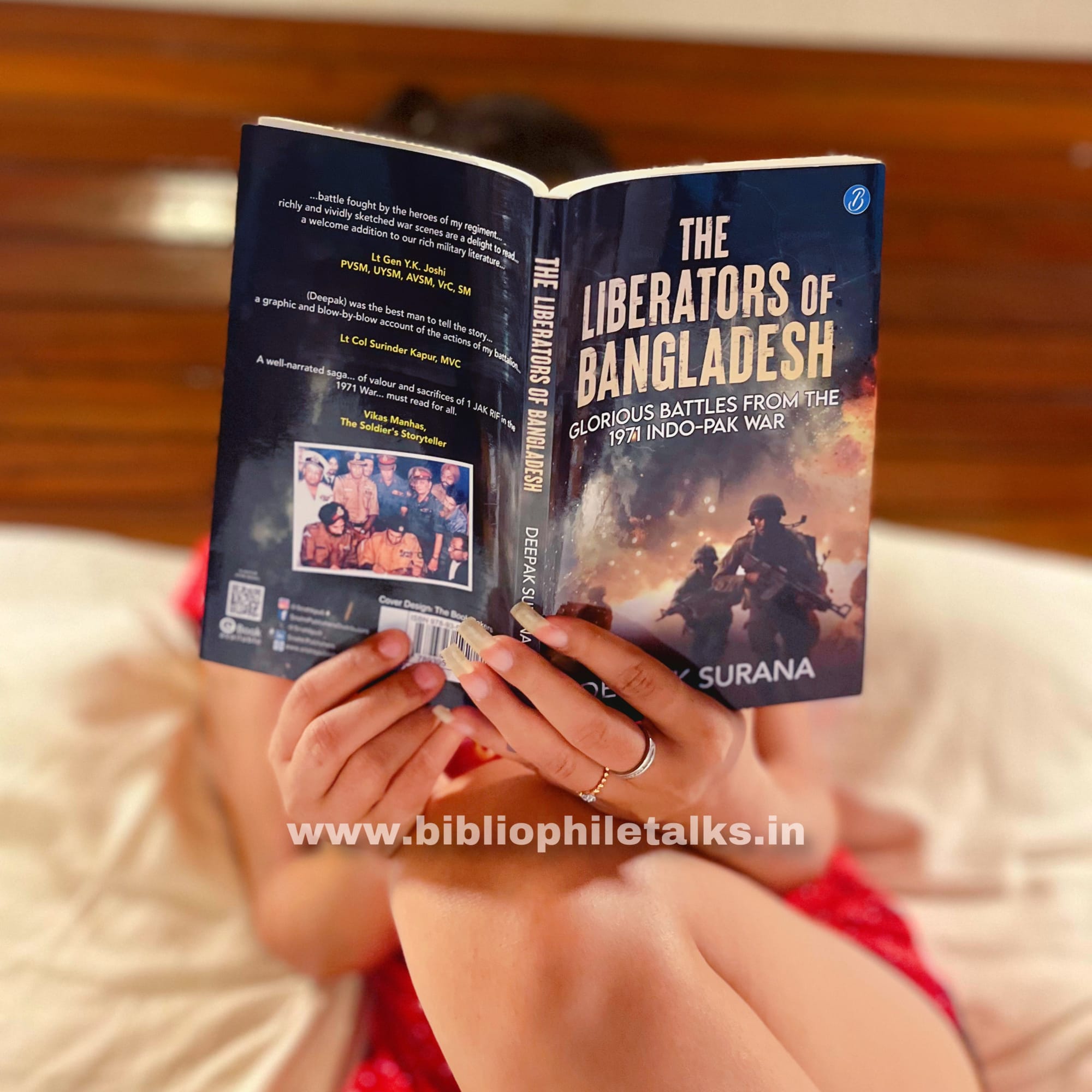THE LIBERATORS OF BANGLADESH

𝗧𝗵𝗲 𝗟𝗶𝗯𝗲𝗿𝗮𝘁𝗼𝗿𝘀 𝗢𝗳 𝗕𝗮𝗻𝗴𝗹𝗮𝗱𝗲𝘀𝗵
𝗕𝘆 𝗗𝗲𝗲𝗽𝗮𝗸 𝗦𝘂𝗿𝗮𝗻𝗮
𝗣𝘂𝗯𝗹𝗶𝘀𝗵𝗲𝗿: 𝗦𝗿𝗶𝘀𝗵𝘁𝗶 𝗣𝘂𝗯𝗹𝗶𝘀𝗵𝗲𝗿
𝗣𝗮𝗽𝗲𝗿𝗯𝗮𝗰𝗸: 𝟏𝟔𝟎
𝗣𝘂𝗯𝗹𝗶𝘀𝗵𝗲𝗱: 𝟕𝘁𝗵 𝗔𝘂𝗴𝘂𝘀𝘁 𝟐𝟎𝟐𝟒
𝗚𝗲𝗻𝗿𝗲: 𝗧𝗿𝘂𝗿 𝗔𝗰𝗰𝗼𝘂𝗻𝘁𝘀, 𝗪𝗮𝗿
𝗜𝗻𝗱𝗶𝗮𝗻 𝗪𝗿𝗶𝘁𝗶𝗻𝗴
𝗥𝗲𝗮𝗱𝗶𝗻𝗴 𝗬𝗲𝗮𝗿: 𝟐𝟎𝟐𝟒
The book vividly brings to life the events of early 1971, when battalions moved to the border amid the post-independence unrest in East Pakistan. It portrays the harrowing conditions that forced refugees to flee to West Bengal and highlight India's reliance on Russian support during this turbulent time. The narrative vividly depicts the atrocities committed by West Pakistan on the Bengali population and the subsequent formation of the Mukti Bahini, which was trained and supported by the 1st JAK Rifles.
We are taken on a captivating journey from the battalion's station in Arunachal Pradesh, shrouded in secrecy, to their operations in Siuri, Birbhum, combating Naxalism and militancy, and finally to the East Pakistan border. It is both inspiring and surprising to see their unwavering enthusiasm for what they have been preparing for on the frontlines of war.
At several moments, the book delves into the emotional conflicts these soldiers face when called into action, reflecting on whether they will ever reunite with their families. Yet, their ability to shift instantly into combat mode leaves a lasting impression.
Throughout the narrative, Lt Col Surinder Kapur emerges as a pivotal figure, leading with strategic brilliance. His guidance is evident in every aspect of the war, from managing the floods during the monsoon to bringing down the enemy's morale by raising the flag of Bangladesh. Through clever tactics, such as depleting the enemy’s ammunition with misdirection, he adds depth to the story, making the reader feel more invested in the battalion’s journey and their role in history.
As for the other aspect of the book, it is a concise read, spanning approximately 130 pages. The language is straightforward, and the narration flows seamlessly, making it an engaging and fast-paced experience. The author has written it with great skill, demonstrating thorough research. While the book is accessible to readers of any genre, it will particularly resonate with those who enjoy true accounts of war and Indian Army operations. Such readers are sure to appreciate the detailed and authentic portrayal.
My Rating:
4/5
NOTE: In this blog, the CONTENT and PICTURES are owned by Samayra Singh, and cannot be used or distributed without permission. Strict legal action will be taken against any infringement.